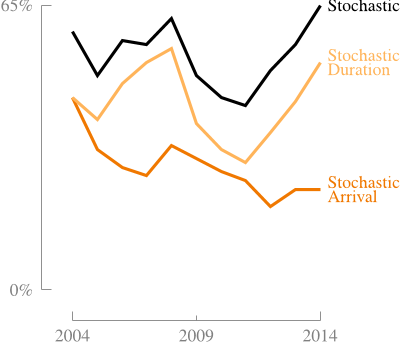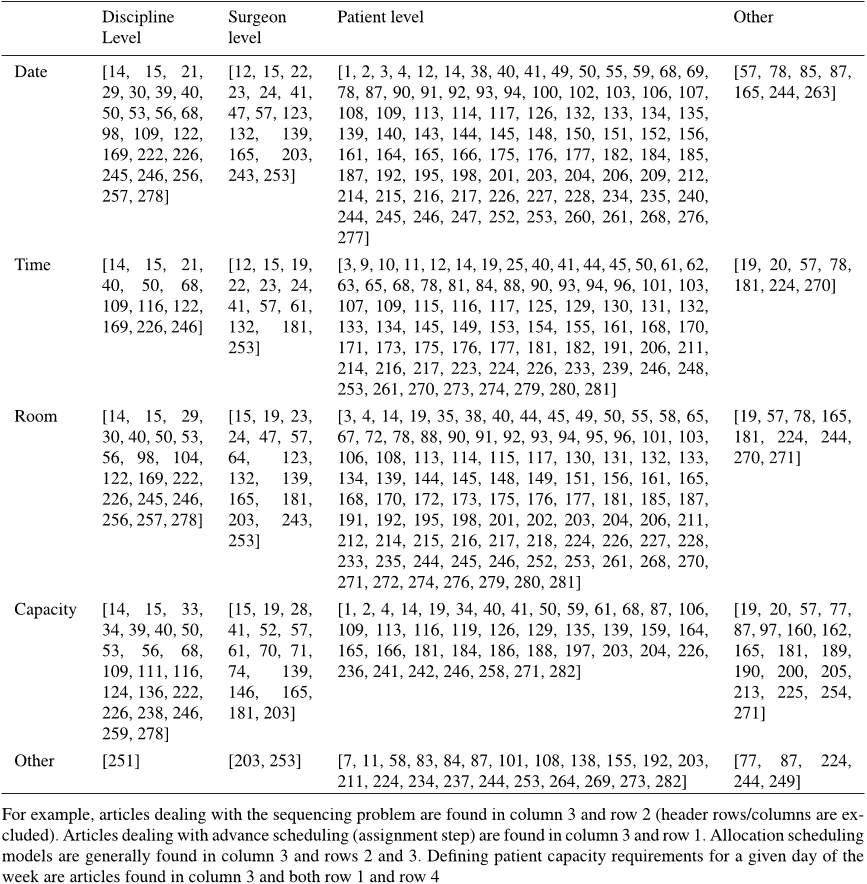




Did you find this useful? Give us your feedback


























213 citations
...[28] [29] [30] [31] [32] Articles include the longer turnover times associated with cleaning when a patient has known infection, but reducing infections is nonetheless not the mathematical objective in these studies....
[...]
...[28] [29] [30] [31] [32] Therefore, we included the online bibliography used by specialists in OR management....
[...]
128 citations
77 citations
66 citations
57 citations
6,209 citations
1,297 citations
1,099 citations
...[46]....
[...]
936 citations
...OR [105, 112] [42, 60, 73, 82, 109, 167, 179, 210, 219] Hospital [26, 27, 32, 262] [27, 32, 137, 231, 232, 250, 255] Health care [112, 127, 128] [36, 110, 112, 127, 128, 207]...
[...]
..., the type of the arrival process [110]....
[...]
928 citations
...ment scheduling, we refer to [48]....
[...]
The authors classified the OR planning and scheduling literature over the years 2000-2014 with regard to the patient type, the different performance measures, the decision that has to be made, the integration of OR supporting units, the incorporation of uncertainty, the operations research methodology and the testing phase. For example, generally articles where analytical methods ( e. g., Markov models ) are used, will often assume estimated durations to be equal, as this is a strong assumption one should be careful when generalizing the results of these methods to inpatient scheduling.
For instance, PMs that are mostly used in the DES literature are patient waiting time, overutilization, utilization, throughput and deferral.
An assumption that is typically made when using an MP or an improvement heuristic to solve the patient-to-date assignment problem is that the patient population that needs to be scheduled is known in advance (i.e., at the moment of scheduling).
the methods that are used for dynamic scheduling in an appointment setting are not easily transferable to a surgery scheduling setting for various modeling reasons (e.g., estimated slot durations in the former setting are assumed to be of equal length, while in the latter they are highly variable).
Research is needed on applicable rescheduling policies since it is an important mechanism in hospitals which affects both patient and staff satisfaction.